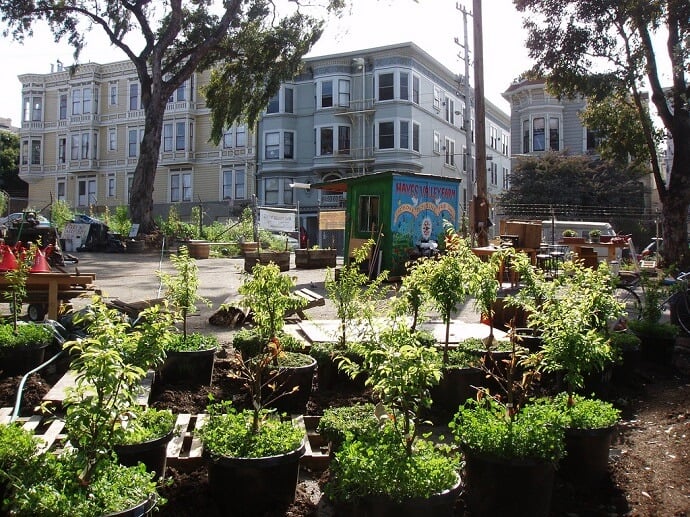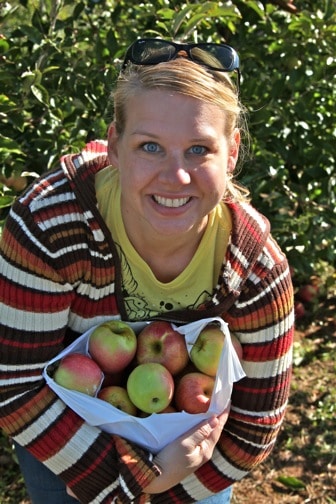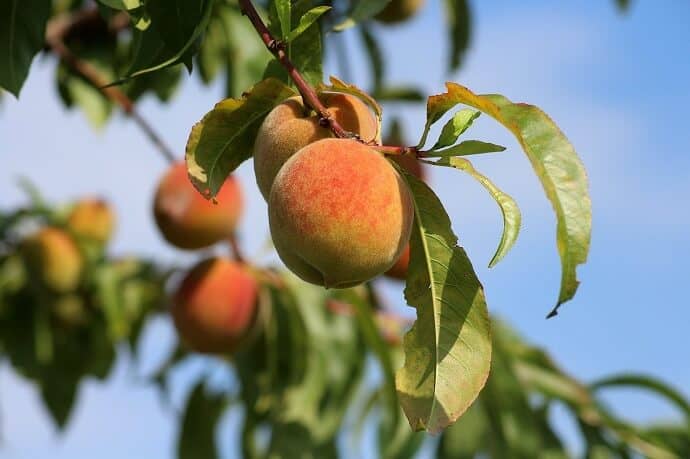Permaculture is a system of designing the environment. It’d embody each factor from how our home operates successfully and the best way we sustainably buy our vitality to how we produce our private healthful pure meals.
It is this ultimate merchandise—rising meals— for which the permaculture movement will get most likely probably the most consideration. Nevertheless permaculture designs are about extra of merely putting in raised yard beds, vertical gardening or pure gardening.
Permaculture yard designs try to create miniature ecosystems with a mix of vegetation, along with pure fertility, minimal irrigation, and fast entry.
These gardens, whereas terribly productive, sometimes appear to be a wild scattering of vegetation versus the tidy rows of industrial agriculture.
Together with crops, they sometimes embody water choices, rockeries, stumperies, wild and domesticated animals, and folks as energetic parts of the ecosystem.
One primary distinction between typical gardens and permaculture gardens is a give consideration to perennial greens over annuals.
Whereas tomatoes, cucumbers, and completely different classics may very well be found inside the permaculture yard, these vegetation are annuals. Because of they develop to maturity in a single season, they require far more care and fertility. All through the pure system, they’re considered “takers.”
Perennials, nevertheless, are sluggish and common, pacing themselves for years of producing and persistently giving once more to the earth. Some acquainted examples of perennial greens are chives, garlic, rhubarb, asparagus, artichokes, and Turkish rocket (a type of arugula).
All that being acknowledged, most likely a very powerful and productive provide of perennial meals comes from timber. So the signature permaculture yard design truly is the forest yard, or meals forest.
Mainly, that’s an edible forest whereby the timber– the precept provide of producing– and completely different vegetation have been picked for his or her potential to every current meals and fulfill the fully completely different roles of the fully completely different vegetation in a pure forest environment.
Be taught on to check additional about what a meals forest is, the essential parts it ought to incorporate, and the best way to plan and design your particular person!
READ MORE: What’s Permaculture Gardening? (Intro to Design & Concepts)
Why a Meals Forest Is the Final Yard
To consider the proper permaculture meals forest, contemplate Eden. Proper right here, a stroll by the woods is full of fruit, nuts, and— if we’re being honest—presumably even a snake.
One different method to think about it is to consider a forest whereby nearly every plant provides one factor for the kitchen desk. In permaculture, meals forest designs provide fairly a couple of benefits:
Extreme Manufacturing
A median tomato plant provides about 20 kilos of meals at best. A median semi-dwarf apple tree is probably nearer to 200 kilos.
In meals forests, we would have every apple timber and tomato vegetation, along with dozens of various vegetation. Nevertheless the precept thought to remember is that one tree provides MUCH additional meals than a plant.
Longevity
Together with providing additional meals per plant, forest gardens and perennial strategies have longevity.
We plant and foster the seedlings as quickly as, they normally current for years (presumably a very long time).
A blackberry bush might solely produce the an identical weight in meals as a tomato plant, nevertheless it could accomplish that yr after yr after yr in its place of merely as quickly as.
Low Maintenance By the use of Cooperation
Meals forest designs embody a mixture of vegetation, all of which fulfill specific options.
Timber help with water cycles, stability, and mulch. Some shrubs repel/confuse pests, flowering vegetation entice pollinators, and legumes improve soil fertility.
They work collectively like a forest ecosystem that takes care of itself. We intrude proper right here and there so the forest supplies us additional of what we want– fruit, nuts, greens, and lots of others.
Biodiverse Ecosystem for Wildlife
In distinction to customary vegetable plots or orchards, a meals forest works on behalf of wildlife.
It’s a system of selection considerably than monoculture, so it doesn’t require fastened fertilizer or pesticides.
As a substitute, the vegetation and animals of the forest help each other, with every valued for its contribution. Animals unfold seeds, fertilize soil, pollinate fruit, till earth, and far more.
Aesthetic Enchantment
Cartons on the grocery retailer might current us tidy farms with well-groomed rows, nevertheless nature doesn’t work this way. Nature’s magnificence is far more… successfully, pure.
Inside the meals forest, one factor fully completely different is on a regular basis blooming, the underbrush is obtainable in seasonal waves, and animals flitter about.
A yard meals forest is a far more inherently pretty picture than a intently tilled space that has been doused in chemical compounds.
This guidelines might go on. We haven’t gotten into soil fertility, or water cycles, or oxygen, or sustainability or the quite a few completely different very good points that forests bestow. In simple phrases, they’re bastions of the planet, and a meals forest yard is a cornucopia for humanity.
READ MORE: Rising Meals in Small Areas (Container & Vertical Gardens)


Understanding the Components of a Meals Forest
Permaculture meals forest design depends on observing the ecology of precise forests and mimicking it with food-producing species.
Though we generally affiliate forests with timber, the precise reality is that there is far more taking place than that. There are recurring layers of progress evident in almost every type of forest:
Overstory
Overstory timber are those that attain the easiest, creating a canopy over loads of the forest.
These embody oaks and maples, which may be grown for meals merchandise– acorns and maple syrup. Totally different edible selections would include chestnuts, pecans, walnut, and butternut (a.okay.a. white walnut).
These timber normally surpass the 50-foot mark, so they will not be acceptable for all suburban meals forests.
Understory
Understory timber are shorter, filling inside the areas between big timber.
Relating to meals forests, that’s the place the fruit timber nestle (notably semi-dwarf varieties, which might be increasingly more frequent).
There are moreover nut timber that match into this slot, akin to hazelnut, chinquapins, and almonds. Small, presumably productive nitrogen-fixing timber (we’ll get to that in a minute) are an unlimited ingredient proper right here as successfully.
Shrubs
Shrubs are the next layer. Like timber, they’ve woody stems, nevertheless with quite a few stems coming out of the underside. They’re typically as a lot as 13 ft tall, nevertheless their stems are smaller in diameter.
They embody vegetation akin to forsythia, roses, lavender, and rosemary, all of which might be edible and medicinal. There are moreover quite a few berries on this class.
Most are shade-tolerant and/or grown on the sides of forests, the place they’re going to get daylight.
Herbaceous Vegetation
Herbaceous vegetation are normally smaller than shrubs, nevertheless don’t have wooden stems.
Vegetable yard variations embody tomatoes, peppers, corn, parsley, dill, and so forth. There are moreover herbaceous weeds, akin to garlic mustard (delicious edible), dandelion (delicious edible), and nettle (delicious edible).
For a meals forest, the goal may very well be to include herbaceous vegetation that don’t require quite a bit care or space to thrive.
Groundcovers
As their establish implies, these vegetation specialize in overlaying the underside. This protects the soil from drying out, eroding, and lots of others.
These embody clover (edible), strawberries, and “creeping” herbs. These will pop up alongside forest edges, or in spots the place the photo voltaic reaches the forest flooring.
Bulbs/Roots/Rhizomes
Whereas most vegetation have bulbs, roots, or rhizomes, some vegetation are champions of them, along with carrots, potatoes, and beets.
Nevertheless there completely different vegetation with good surprises that dwell underground. As an example, ginger and turmeric every have rhizomes (or underground stems) that we use in our meals.
Vegetation from the allium family, akin to garlic and onions, have edible bulbs. Jerusalem artichoke, groundnut, and peanuts even have edible parts beneath the ground.
Vines & Climbers
Vines and climbers are another layer to the extended forest family. They’re going to wind their method alongside the underside, akin to pumpkins do, or they’re going to get vertical like wild grapes or hops.
We even have vines which may be notoriously invasive, such kudzu (which might be edible and intensely nutritious), which have the facility to set off some vital systemic alterations in a forest.
Fungi
Though not a plant, fungi are an integral part of what’s taking place in any forest.
Mushrooms help to complete the life cycle of picket provides from fallen timber and feed them to rising timber. An earlier permaculture edict is {{that a}} new forest grows on an earlier one, and fungi are the essential factor to it.
Plus, there are good edible mushrooms to be included all through the guidelines of forest yard merchandise, and they’re typically cultivated inside the shade of our established timber.
What’s crucial to take away from this guidelines of layers is that there are multitudes of points rising inside the forest furthermore timber. If we’re making a forest yard, we’ve got to account to some extent for all these fully completely different ranges. They’re what make a forest a forest, and add quite a bit additional meals manufacturing to the world.
READ MORE: How one can Develop Mushrooms at Home (A Step by Step DIY Info)


Planting with Time, Space & Carry out in Ideas
Because of we are the designers of our permaculture forest, we have the prospect (and obligation) to determine on our vegetation appropriately.
We now have to space them with enough space to develop, and generally alter to the system to take care of it productive.
We should all the time create groups (known as guilds) that work successfully collectively, providing all the fully completely different sensible roles going down in a forest system.
We are going to even think about the place the forest is probably in a yr’s time (or three years, or twenty years), and ponder the life cycles of place and the best way they could match collectively.
Nitrogen-Fixers
Nitrogen-fixers are the renewable gasoline that makes the meals forest develop.
Some vegetation have the facility to take nitrogen from the air and put it into the soil. Nitrogen is the center of most fertilizers, along with pure selections like manure and compost.
There are nitrogen-fixers of all shapes and sizes. Black locust timber (edible flowers, good fencing timber) are huge, they normally restore nitrogen into the soil.
Clover is tiny, and it fixes nitrogen into the soil. Goumi berry shrubs have delicious fruit, they normally restore nitrogen into the soil. Beans and peas of all types are nitrogen-fixers.
Nitrogen-fixing vegetation should play an unlimited place when a starting meals forest (about 90% of what’s planted), they usually must be slowly phased out as productive timber lastly come into their very personal.
Carry out
In a fruit forest or meals forest, the precept aim is to build up a crop. Nonetheless, in distinction to orchards, these are ecosystems. And inside ecosystems, specific particular person vegetation have specific roles to play.
Nitrogen-fixers fertilize, nevertheless we even have aromatic vegetation for pest administration, flowery vegetation for pollinators, and ground covers for soil security.
Timber current habitat, shelter, stability, leaf litter, flood mitigation, wind suppression, and far more. Many vegetation perform quite a few options.
We should all the time focus on what roles the meals forest vegetation we choose are speculated to play, along with what they will offer us with.
Mature Measurement
Measurement is a crucial concept when piecing collectively a meals forest. Whereas it’s true that two huge oak timber might develop correct subsequent to at least one one other, this isn’t the model for bushy, productive timber.
Happily, we have particulars about how enormous timber get and the way briskly they develop. So we are going to assume twice about spacing them adequately to ensure they’re going to completely discover their potential and by no means merely race to see who will get highest the quickest.
That’s important on account of, as quickly as they’re completely grown, they’re going to’t be moved. Give them room to breathe and fill the areas in between with the lower layers.
In numerous phrases, guarantee that to go away avenues for the photo voltaic to reach all over the place inside the forest.
Part-outs
Pure forests bear predictable secessions, with pioneer vegetation (generally nitrogen-fixers and fast-growing stuff, which might be classically known as “invasives”) paving one of the simplest ways for the long-standing species that will become the forest cowl.
Whereas 90% of a beginning meals forest should be nitrogen-fixers, that amount should reverse to 90% productive timber when the forest matures.
This suggests the nitrogen-fixers are being intently pruned and cut back all the best way right down to feed the forest spherical them, and that makes the permaculture forest develop quite a bit prior to a pure one would.
As a substitute of allowing a sluggish pure growth of dominant vegetation, we start them and regulate the state of affairs.
Edible Edges
These areas are going to be an superior provide of producing inside the meals forest.
Loads of herbaceous vegetation and woody shrubs like to hold round on the outer edges of forests, the place they’re going to soak up a great deal of photo voltaic. That’s the place we are going to put prize edibles like berries.
We are going to moreover create additional “edge influence” by spacing our timber appropriately and planting inside the gaps between them. We are going to even create rather more micro variations of this by together with small rockeries and stumperies all through the meals forest.
The perimeters spherical them, you’ll uncover, seem notably fertile and energetic, a la fence traces or yard borders.
Water
Water is essential for our forest, notably in arid climates. Having a dense forest cowl helps with retaining moisture on account of it retains the photo voltaic from evaporating all of it.
That being acknowledged, areas with bare soil should be lined with mulch, and presumably cultivated with some type of plant. It’s prime precise property.
It is also doable to make use of water conservation methods and harvesting choices, akin to mulch pits (an excavated hole full of pure waste), swales (which might be put in sooner than planting one thing), and small ponds or dams. Gray water is sweet for meals forest gardens.
READ MORE: How one can Make a DIY Rainwater Harvesting System


Planting a forest yard is for meals now, however moreover for generations to return.
These aren’t like vegetable plots. They persist for a few years, and have the facility to repeatedly regenerate themselves if left unfettered by human fingers.
As quickly as established, they don’t need quite a bit in one of the simplest ways of human intervention.
Nevertheless, as a result of the grower, we do spend some time pruning, harvesting, and monitoring our edible meals forest to take care of them as productive as potential. In the end, we’re rising dinner proper right here!
READ MORE: What’s Aquaponics? (The Closing DIY Beginner’s Info)


Guidelines of Meals Forest Vegetation
To help with deciding which vegetation may go in your meals forest, listed under are some notable vegetation that match the native climate the place I dwell on the North Carolina/Virginia border (USDA Zone 7a):
Productive Timber
- Pecan, butternut, walnut, chestnut, oak (acorns), hickory (nuts)
- Apple, pear, peach, plum, nectarine, cherry, fig, pawpaw
Nitrogen-Fixers
- Locusts, Japanese pagoda tree
- Mimosa, goumi (and many of the Elaeagnus family), alder, sea buckthorn, buffaloberry
- Licorice, vetch, indigo,
- Groundnut, scarlet runner bean, wisteria
- Crimson & white clover
Pests & Pollinators
- Principally, one thing with a flower, nevertheless early- and late- blooming species are notably prized on account of they provide pollen when it’s extra sturdy to return by.
- Garlic, horseradish, and daffodils are good for thwarting underground assaults.
- Rosemary, lavender, mint, sage, dill, and completely different culinary herbs are good for sophisticated air assaults, along with drawing in pollinators.
Totally different Useful Vegetation
- Dynamic accumulators are good for pulling out quite a few nutritional vitamins from the soil, then being cut back down and laid on the soil (a.okay.a. “chop and drop”) for various vegetation to get these nutritional vitamins: comfrey, chamomile, chicory, nettle, sorrel, tobacco, borage, and lots of others.
- Berries
Whereas our rising native climate will not fully match these in, say, Michigan to the north or Louisiana to the south, the online will definitely current additional info on the vegetation which may be best in your zone. –Jonathon Engels; lead {photograph} by chulmin 1700 courtesy of Pixabay
